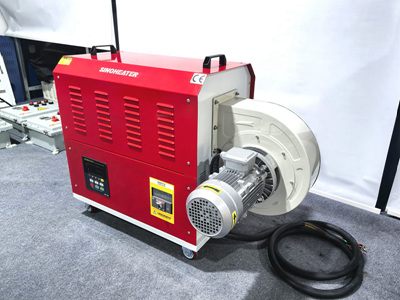Analyzing Heat Blower Malfunctions in Electromagnetic Interference (EMI) Environments
Electromagnetic interference (EMI) from nearby equipment, power lines, or radio frequencies can disrupt heat blower operation, causing erratic behavior or complete failure. Identifying and mitigating EMI-related issues ensures reliable performance. Below are detailed steps to diagnose and resolve common EMI-induced problems.
1. Recognizing Symptoms of EMI-Induced Faults
Understanding signs of electromagnetic interference helps pinpoint the root cause.
- Uncontrolled On/Off Cycling: The heat blower may turn on or off randomly without user input, often coinciding with the operation of nearby machinery or power fluctuations.
- Intermittent Error Codes or Alarms: Display panels may show inconsistent error messages or flicker, even when the unit is functioning normally. This suggests interference with control signals.
- Erratic Fan or Heating Element Behavior: The fan may speed up or slow down unexpectedly, or the heating element may cycle on and off rapidly, leading to inconsistent temperature output.
2. Identifying Sources of Electromagnetic Interference
Locating EMI sources is critical for effective troubleshooting.
- Check for Nearby High-Power Equipment: Industrial machinery, generators, or large motors emit strong electromagnetic fields. Assess whether the heat blower is positioned close to such devices.
- Inspect Power Lines and Wiring: Poorly shielded or damaged power cables can act as antennas, picking up and transmitting EMI. Look for frayed wires, loose connections, or overlapping cables near the heat blower.
- Evaluate Wireless Devices: Cordless phones, Wi-Fi routers, or Bluetooth gadgets operating nearby may interfere with the heat blower’s control circuitry, especially if it uses wireless communication.
3. Testing for EMI-Related Component Failures
Diagnose whether EMI has damaged internal components.
- Inspect the Control Board: EMI can corrupt firmware or damage sensitive electronics on the circuit board. Look for burnt components, swollen capacitors, or discolored traces. Use a multimeter to test for proper voltage and continuity.
- Test Sensors and Switches: Malfunctioning temperature sensors, limit switches, or safety relays may misreport data due to EMI. Verify their readings against manual calibrations or replace them if inconsistent.
- Check Wiring for Induced Voltage: Use a non-contact voltage detector to scan wiring for stray electromagnetic fields. If induced voltage is detected, reroute cables away from EMI sources or shield them with conductive materials.
4. Shielding and Grounding the Heat Blower
Implement protective measures to reduce EMI susceptibility.
- Install EMI Filters: Attach ferrite cores or EMI filters to power cords and signal cables to suppress high-frequency noise. Ensure filters are rated for the heat blower’s voltage and current requirements.
- Improve Grounding: A properly grounded unit dissipates stray electromagnetic energy. Check that the heat blower’s grounding wire is securely connected to a reliable earth ground. Avoid daisy-chaining ground connections.
- Use Shielded Cabling: Replace unshielded wires with foil- or braid-shielded cables for power, control, and sensor connections. Ensure shields are grounded at one end to prevent ground loops.
5. Isolating the Heat Blower from EMI Sources
Relocate or reposition the unit to minimize interference.
- Increase Physical Distance: Move the heat blower farther from high-EMI equipment, power lines, or wireless transmitters. A separation of at least 3–6 feet (1–2 meters) may reduce interference.
- Use EMI Shielding Enclosures: Encase the heat blower or its control panel in a conductive metal enclosure (e.g., aluminum or steel) to block external electromagnetic fields. Ensure ventilation is not compromised.
- Orient Cables Strategically: Run power and signal cables perpendicular to EMI sources (e.g., power lines) to reduce coupling. Avoid bundling cables with high-EMI emitters.
6. Troubleshooting Persistent EMI Issues
If problems persist, deeper faults may require advanced diagnostics.
- Test with a Different Power Source: Plug the heat blower into a circuit on a separate electrical panel to rule out power-line EMI. If the issue resolves, the original circuit may need filtering or rewiring.
- Check for Software or Firmware Glitches: EMI can corrupt control algorithms. Update the heat blower’s firmware (if available) or reset it to factory defaults to eliminate software-related interference.
- Consult an EMI Specialist: For complex environments (e.g., factories, hospitals), hire a professional to conduct an EMI survey and recommend tailored solutions.
7. Addressing EMI-Induced Component Degradation
Replace or reinforce components weakened by prolonged EMI exposure.
- Replace Damaged Capacitors: EMI can cause electrolytic capacitors to swell or leak. Inspect the circuit board for bulging or discolored capacitors and replace them with low-ESR (Equivalent Series Resistance) models.
- Reinforce Control Board Traces: Thin or corroded traces on the circuit board may break under EMI stress. Use conductive epoxy or jumpers to repair minor breaks, or replace the board if damage is extensive.
- Upgrade Sensitive Components: If the heat blower uses analog sensors or switches, consider replacing them with digital, EMI-resistant alternatives (e.g., optically isolated sensors).
8. Preventing Future EMI-Related Failures
Adopt proactive measures to protect the heat blower in electromagnetic environments.
- Schedule Regular EMI Audits: Periodically inspect the unit and its surroundings for new EMI sources (e.g., added equipment, relocated power lines). Adjust shielding or grounding as needed.
- Train Staff on EMI Awareness: Educate users on avoiding practices that increase EMI risk, such as placing the heat blower near radios, microwaves, or unshielded motors.
- Document EMI Mitigation Steps: Keep records of shielding installations, grounding improvements, and component replacements to track the unit’s EMI resilience over time.
By following these steps, users can diagnose and resolve EMI-related heat blower malfunctions. Prioritize safety during testing and modifications, and avoid operating the unit in unshielded, high-EMI environments until repairs are complete. Proactive shielding and isolation minimize the risk of future interference.




